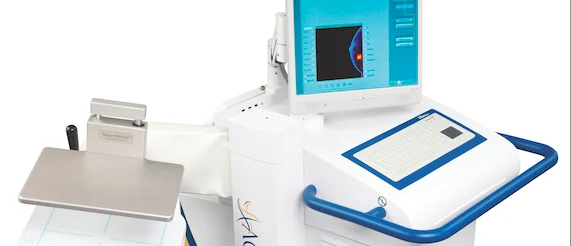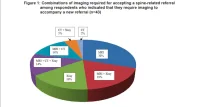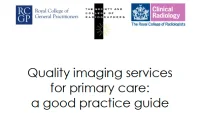Molecular breast imaging (MBI), also known as breast-specific gamma imaging (BSGI), is a relatively new form of breast cancer detection conducted by injecting the patient in the arm with a specialised tracer and then obtaining images of the tracer distribution using detectors. The imaging procedure is similar to that of mammography, but with significantly less compression and each image takes between 5 – 10 minutes to obtain.
Previous work has established that it can detect cancers missed by mammography, particularly in patients with dense breast tissue however this new research, published earlier this year in the European Journal of Nuclear Medicine and Molecular Imaging, is the largest analysis conducted to date.
Dr. Sun and his research team evaluated hundreds of peer-reviewed articles published on this modality to determine the soundness of the scientific methodology used in each paper. Nineteen papers containing 3,093 patients met their strict criteria for inclusion. Their meta-analysis determined that MBI detected 95% of the cancers overall and that it was particularly useful in: cancers smaller than 1 centimetre, an early stage cancer called ductal carcinoma in-situ, and a type of cancer difficult to detect with mammography called lobular carcinoma with sensitivities of 84%, 88% and 93% respectively. The smallest malignancy detected by MBI was 1mm and it was able to detect breast cancer in 4 of every 100 women who had a negative mammogram. The authors also noted that MBI was as sensitive as breast MRI in the detection of breast cancer, but provided higher specificity (80%) meaning fewer positive results in women without disease. In addition, the MBI procedure can be performed for about 1/3rd the cost of breast MRI and is useful for patients who cannot have an MRI study. Their findings also suggested that similar to breast MRI, MBI can detect additional cancers in 6 of every 100 women who have only one cancer seen by mammography and ultrasound and that it may be useful to help monitor the response of tumours to chemotherapy in patients who are receiving their chemotherapy before breast surgery.
Although the MBI procedure does expose the patient to some radiation, the radiation dose patients receive is similar to that of other diagnostic imaging studies routinely used in medical imaging and there are several researchers looking to reduce the dose even further in order to broaden its use into breast cancer screening. The authors concluded, "Current evidence suggests that BSGI is an extremely useful adjunct to mammography for its ability to identify breast cancer with a high diagnostic performance."
Reference:
Clinical usefulness of breast-specific gamma imaging as an adjunct modality to mammography for diagnosis of breast cancer: a systemic review and meta-analysis. Yu Sun, Wei Wei, Hua-Wei Yang, Jian-Lun Liu,
European Journal of Nuclear Medicine and Molecular Imaging February 2013, Volume 40, Issue 3, pp 450-463
Latest Articles
Imaging, Molecular
Molecular breast imaging (MBI), also known as breast-specific gamma imaging (BSGI), is a relatively new form of breast cancer detection conducted by inject...










